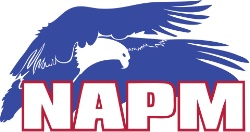Seamless AcceptanceSeamless Acceptance automates mail entry and verification by leveraging electronic documentation, Intelligent Mail barcodes (IMbs), and information collected from handheld sampling devices and mail processing equipment scans. The USPS requires a mailer to participate in the Seamless Parallel program and remain below the Seamless Acceptance error thresholds for at least 30 days before they can move into full Seamless. The USPS has Seamless Acceptance price incentives for mailers who are in Seamless Acceptance. To be eligible for this discount, pieces must qualify for IMb Full-Service and the mailing CRID must be enrolled in Seamless Acceptance and be registered for the incentive. More information can be found on the USPS' Postal Pro website at https://postalpro.usps.com/seamless-incentive. Seamless Acceptance, as well as Full-Service, Move Update, and eInduction are covered in detail in the USPS' Guide to Streamlined Mail – Letters and Flats – Publication 685. NAPM recommends all mailers considering Seamless Acceptance becomes familiar with this USPS Publication. Seamless Acceptance Parallel Process Mailers considering a move into Seamless Acceptance are first put in a USPS “parallel” Seamless process. During the parallel process, both the USPS and the mailer view results of automated Seamless verification to prepare the mailer for entry into the program. This allows the USPS and mailer time to evaluate and resolve mail quality issues, business processes, and any software issues. During Seamless Parallel mailers are not responsible for any Seamless Acceptance Postage Assessments – These are “informational” only on the USPS Mailer Scorecard the mailer should be checking. The USPS requires that mailers in Seamless parallel successfully maintain all mail quality measurements above the error threshold for at least one calendar month (NAPM recommends at least 90 days – see below guidance). What’s the Difference between IMb Full-Service Verification and Seamless Acceptance Verifications? There is no difference between IMb Full-Service and Seamless Acceptance e-Doc submitted Mailings. All e-Doc mailings are verified using the Seamless Acceptance automated verification process. Seamless Acceptance automates the verification process, streamlining entry verifications. The USPS notes that in Seamless Acceptance:
All verifications become trend-based verification where mailers no longer have the option to rework the mail. The verification results and postage assessments are calculated on the quality of your total mailings for the entire month. Additional Resources (available to all)
Additional Resources (NAPM members only -- login required)
NAPM’s Guidance on Things to Consider NAPM strongly advises its members to review and consider the Seamless Acceptance requirements, assessment process, and benefits of Seamless Acceptance. NAPM stresses to its members that moving into full Seamless Acceptance is an important business decision. NAPM’s Tactical Committee works closely with the USPS to resolve issues and make improvements to its Seamless Acceptance program. NAPM strongly recommends that mailers consider business process changes necessary to successfully implement Seamless Acceptance on the mailer’s side, such as having employee skill sets to monitor online mail quality reports and perform data analysis, changing processes/practices to ensure constant monitoring occurs and root analyses can be performed quickly to make changes in production operations, etc. to avoid continuance of identified errors, and monitor/review automated invoicing and postage assessments and any necessary appeals process documentation. NAPM since its conceptualization has supported the strategy and goals behind Seamless Acceptance in terms of supporting a different way of doing business, as long as that way provides significant benefits to the value of mail and the supply chain. As USPS initiatives and processes based on Informed Visibility and Enterprise Analytics mature, we think there are benefits to be gained if the USPS supports and enables them, such as:
|


